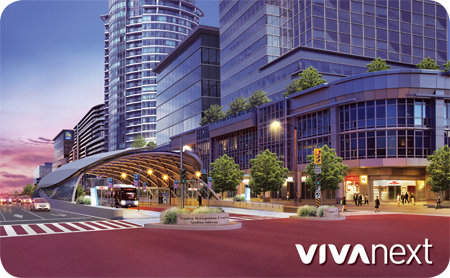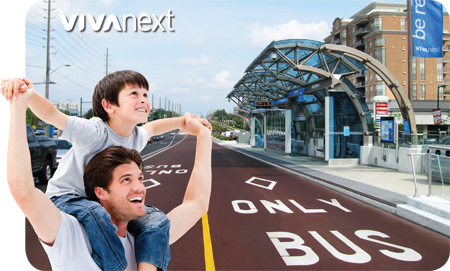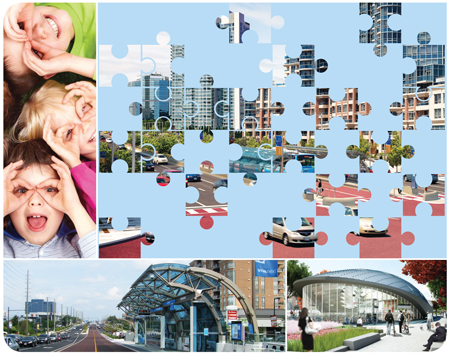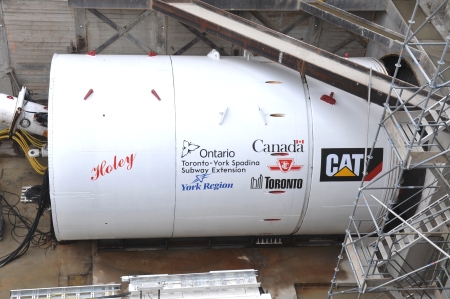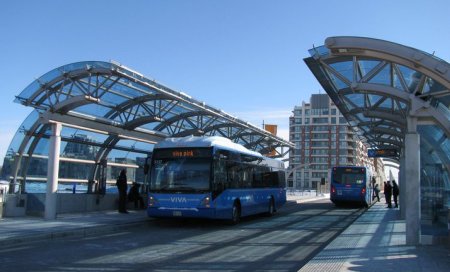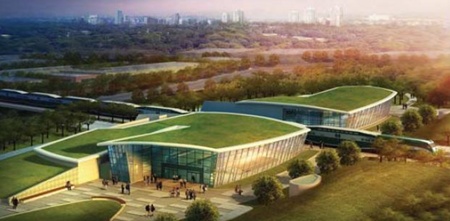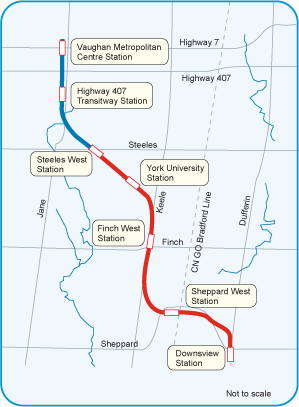If you get vivaNext email updates, you probably recently read that Yorkie and Torkie the tunnel boring machines are munching their way closer and closer to Highway 7 and the Vaughan Metropolitan Centre (VMC).
This is great news, and means that the reality of a subway coming to York Region is getting closer every day. But while the tunneling project is very high profile, vivaNext is also working hard to get ready for the subway opening at our VMC station. Unlike other vivastations which we are building independently, the VMC station construction needs to be closely coordinated with the subway project, adding a whole new level of complexity. Here’s a little background:
The VMC station will be located at Millway Avenue and Highway 7, as part of the VMC development area. To provide passengers with seamless connections between the subway and the viva\YRT system, the subway station will be located on the lower level, with a concourse linking the subway to the vivastation above.
That may all sound relatively straightforward, but in fact there are significant engineering challenges involved with constructing a complicated building in the middle of a live highway, especially when there’s a separate construction project going on directly underneath. One of our top priorities is to ensure while we’re building the station to our own design plans, it also ties in to all the complex TTC systems down below so that everything works properly and in sync.
Some key elements such as escalators, elevators and stairways link the two structures. These need to be in place so the TTC can access the upstairs while they’re building their subway station down below. Escalators and elevator shafts aren’t very forgiving, so we need to work closely together to make sure all the elements line up perfectly.
Another challenge is that there’s not a lot of space to work given the location of the station in the middle of Highway 7. From time to time we’re literally going to be working right on top of each other. So we will be doing a lot of coordinating throughout the process to make sure all our contractors and subcontractors have enough room to do their jobs safely and in parallel.
The main priority for vivaNext and the TTC is that both parts of the VMC station are open when the subway service begins. There’s a huge amount of work to be done between now and then, and we’ll be working closely with our TTC partners during the course of construction.
So stay tuned, and soon I’ll be giving you a proper tour of the VMC station design. It’s going to be a showpiece that will be worth all the hard work.

